When my parents returned home to Edmonds, Washington, from a trip to England in 1983 they brought me two green booklets about the Gokstad faering, the smallest of three ninth-century boats unearthed along with the Gokstad ship in 1880 near Norway's Oslo Fjord. The 21′ faering was the most beautiful boat I had ever seen, and I wanted to build a replica of it. I was 30 and I'd been building boats for five years, sometimes for hire, sometimes on a whim. I waited for an opportunity to build the faering, and getting married provided it. Cindy and I were married in the summer of 1986 and we put off having a honeymoon while she finished grad school. I was self-employed, building and restoring boats along with working on a llama farm on Lopez Island in the San Juan Islands of Washington State. She would finish school the following spring, so I hatched a plan: I’d build the faering that winter and in the summer of 1987, we’d take a honeymoon cruise, rowing the Inside Passage from Washington to Alaska. I went to work on the boat in a temporary shed in my parents' back yard not far from Puget Sound. Carving the stems was by far the most difficult task I'd faced as a boatbuilder. It took me a week just to figure out how to start the job, and another three weeks to finish it.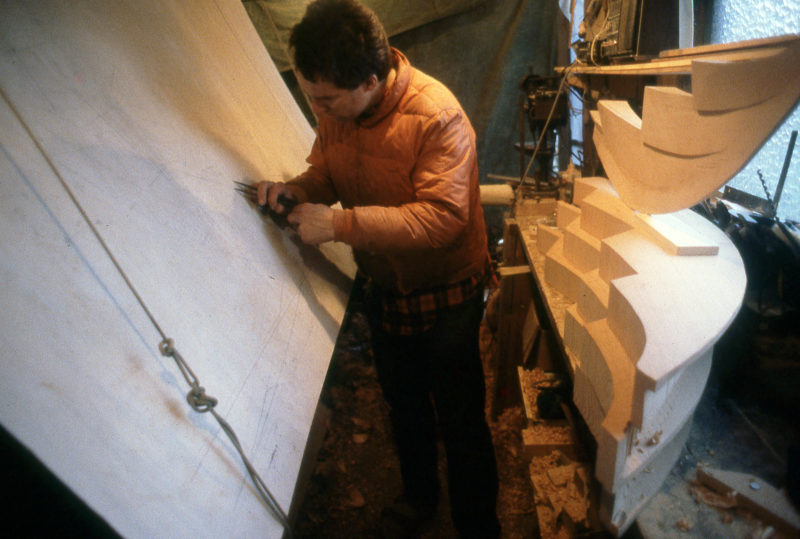 photgraphs are either by the author or from his collection
photgraphs are either by the author or from his collection
Join The Conversation
We welcome your comments about this article. To include a photo with your remarks, click Choose File below the Comment box.
Comments (12)
Comments are closed.

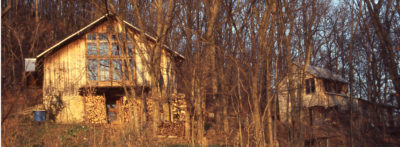
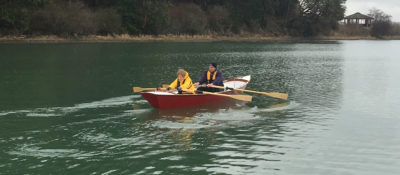
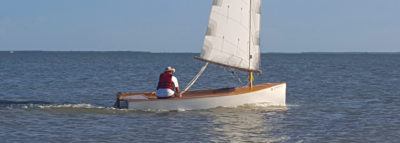
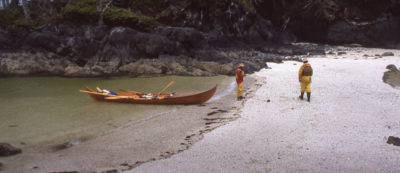
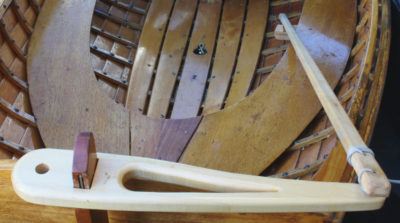
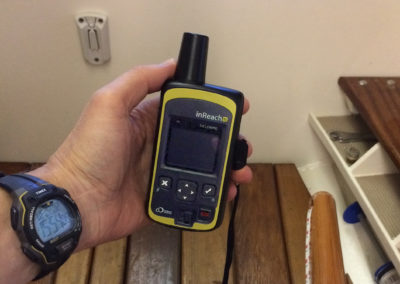


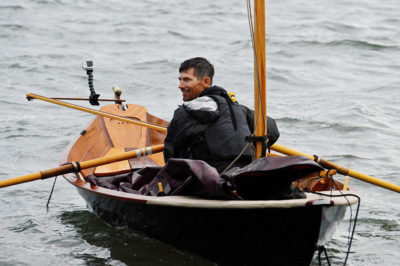
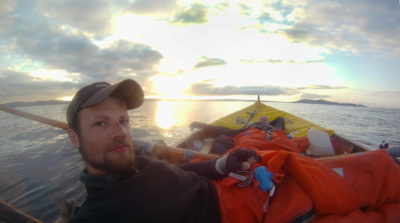
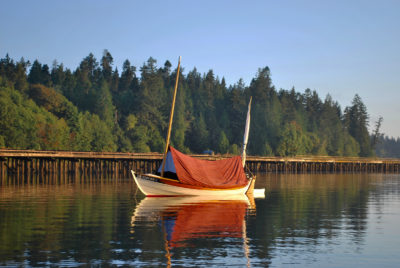
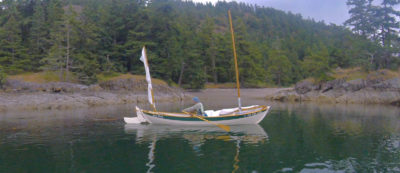
Thanks Chris, for a great story well told. I’m building an Oughtred ELF design.
Great trip and great story Chris!
Looking forward to the next installment.
Beautiful boat. Nice job. I can study the pictures for a long time, and it satisfies something deep inside me.
Great story. One way to really get to know your new mate….
If you were to build a faering style of boat today, would you build to your own design or another designer’s?
If I were to build a faering today, I’d look for a somewhat larger boat that would be a little more spacious and comfortable at anchor. Rowing performance would suffer, so it wouldn’t be as good for a long trip and quick crossings. That said, I still hold the Gokstad faering in high regard as a cruising boat and I doubt any other faering would give me as much pleasure to look at.
Great story, Chris! I am enjoying it so much. Seeing the photo of the Butedale P.O. in 1986 and knowing that it has been consumed by its isolation in rain and wind is a humbling reminder to me that man proposes and Nature disposes. And, to race LOOTAAS (the Wave Eater)? Damn, that’s an honor. But, “You just come from Japan?” will have me smiling for the rest of the day. That question has it’s own IP history.
Looking forward to next month’s continuation of the trip…
Great story, look forward to part 2. Does anyone have building plans for this boat? Working with a skilled friend, we built Ouughtred’s Elfyn. It is a great boat, but the thought of a 21′ version is appealing.
I don’t know of any plans. Perhaps one of our readers can help. I built my Gokstad faering using the lines drawings and overall dimensions that were published in the booklets by parents gave me. The drawings—plan, profile, and end view—were all published in an illustration the size of an index card. I took a photo of the lines and then put the slide in my slide projector to project the image on a wall. I traced the end view full size, but of course the projected lines were quite wide. I spent a lot of time working on the lofting to get a good representation of the lines. Built in the traditional manner, each of the stems would have been carved from a single piece of wood, but I glued together a stack of three pieces. The garboards would have been carved too to create the twist and some hollow. I just steam bent the garboards. They were, as I recall, about 15″ wide so I had to edge-glue another bit of my 12″ planking stock to get the width.
I’ve built quite a lot of boats since then and I’ve learned enough about boatbuilding to know I that I’d never be able to build a Gokstad faering. It’s a good thing that I built mine when I had ignorance in my favor.
Wow, you were very resourceful and innovative. I really admire the projection scheme. I have seen several Gokstad Faerings at the NJ Scandinavian Festival, but I don’t think any were better built or real-world tested like yours. The Oughtred Faering we built used a lot of clever short cuts, laminated stems and plywood. When we had it in the Brooklyn Norwegian 17th-of-May Parade last year it received a lot of compliments. However several older Norwegian-Americans came over to look at it closely only to say “oh its made with plywood” and “its not a real faering”. It would be something if someone were to publish a more traditional step by step instructions on how to build a “real” faering. We still enjoy ours and I think it handles and behaves like a faering.
Great story, Chris, and such a beautiful boat! Where is it now? Do you still have it? I’m sure looking forward to part 2! It sure brings back memories. I, too, bought copies of the two little green books on the Gokstad Faering, by Sean McGrail (published 1976) and dreamed about building it, though as I was just starting out in boatbuilding I was daunted by those huge stems. Almost contemporaneously, In 1976, a short article was published in the National Fisherman about Niklas Koltri, from Torshavn in the Faeroe Islands, invited to Ballard in Seattle for our Bicentennial Celebration to build a Faeroe Island Fyrramannafar–a six-oared boat (roughly 19′ x 5′), which I think would probably be called a sexaering in Norway. The photos of this boat in the magazine, like the Gokstad Faering, spoke to me as having the ultimate essence of boatness. Mr. Koltri, in his late 80s, cranked his boat out in a week or two, having built several hundred of them over the course of his life. I figured, if he can do it in a couple of weeks, it might possibly take me three or four months. After all, how long could it take to fit together six strakes? So I contacted Paul Schweiss, a boat builder in Tacoma, who had helped facilitate Mr. Koltri’s trip, sourcing lumber and fastenings, etc., who very kindly took photos of the boat for me, with a yardstick in each photo for scale, and also sent paper patterns of the stems, etc. Based on this information, I drew up plans over several months, made molds, and got to work. Two years later, instead of the two weeks that Mr. Koltri took, a fairly close copy of the boat was ready for launching. As I wanted to call myself a boatbuilder and make my living at the craft, I decided to sell it after a few months of use. Eventually the buyer donated it to the Center for Wooden Boats in Seattle, where it stayed for many years. The last time I spoke to Dick Wagner, of the CWB, it sounded as though it may no longer be in their possession; they have many boats and he wasn’t sure. If you or your readers might know of the whereabouts of this boat, I’d very much appreciate hearing from you. I look forward greatly to reading your next installment. Thanks again.
Thanks, John. I’ll be providing an epilogue in the second article with information on the history of the faering after the trip.
I don’t recall seeing your boat in recent years at the Center for Wooden Boats. I know the volunteer who takes care of the boats in the Center’s collection and I’ll ask him about it.
Following with great interest. So glad you are sharing the story with us. Brings to mind my trip up the inside on a Tahiti ketch in 1982, including Grenville Channel and a deserted, though illuminated Butedale.
FYI to John, some years ago I remember a faering type of yellow cedar on the docks at the Center. I don’t know what became of that boat. For sure there is no faering in the collection at this time.